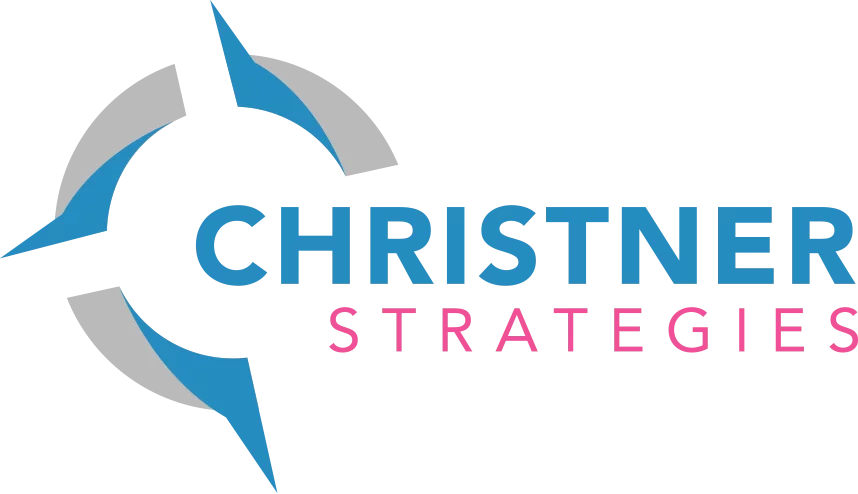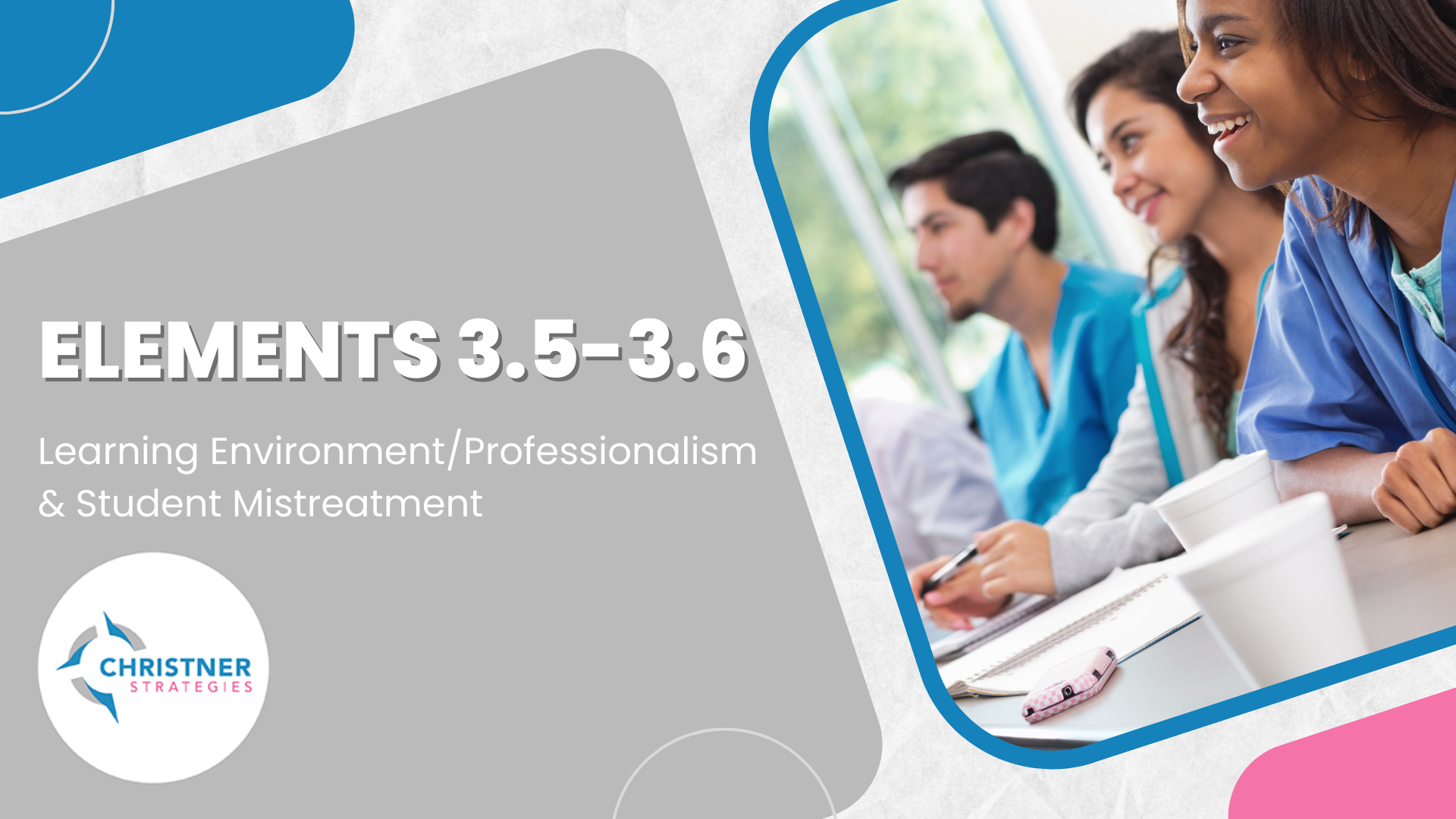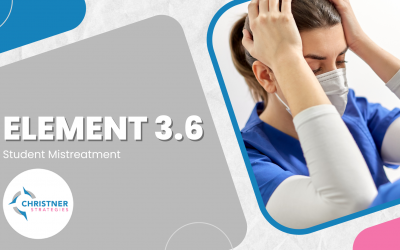LCME Element 3.5 – Learning Environment/Professionalism
A medical school ensures that the learning environment of its medical education program is conducive to the ongoing development of explicit and appropriate professional behaviors in its medical students, faculty, and staff at all locations. The medical school and its clinical affiliates share the responsibility for periodic evaluation of the learning environment in order to identify positive and negative influences on the maintenance of professional standards, develop and conduct appropriate strategies to enhance positive and mitigate negative influences, and identify and promptly correct violations of professional standards.
LCME Element 3.6 – Student Mistreatment
A medical school develops effective written policies that define mistreatment, has effective mechanisms in place for a prompt response to any complaints, and supports educational activities aimed at preventing mistreatment. Mechanisms for reporting mistreatment are understood by medical students, including visiting medical students, and ensure that any violations can be registered and investigated without fear of retaliation.
Hidden Curriculum
This month we provide a combo post that addresses elements 3.5 and 3.6 given their interdependencies. The LCME has always maintained a close focus on these elements, which have assumed even greater urgency as we grow in our awareness of the nature and impact of micro-aggressions, unconscious bias, and systemic racism. As such, it is an ethical imperative that programs dedicate ample resources to fulfilling the intent of these elements. Both elements are equal parts preventative medicine and treatment, and there are multiple aspects in each element that require a systematic approach to dissemination, documentation, and data (enjoy the alliteration). Let’s unpack it all.
There is a lot of documentation involved in these elements. First, document the dissemination of policies, procedures, and education programs. Electronically capture on an annual basis that all stakeholders in the learning environment have read and understood the structures in place for these elements. This includes faculty, residents, and health care staff! Even if these annual reports are collected by clinical departments or residency programs, they ultimately must be shared and managed centrally within the MD program’s administration. Next, ensure that mechanisms for reporting and addressing mistreatment have a clear system of documentation in a way that protects the student and ensures student concerns are not neglected. Manage incidences to ensure the communication loop is closed for all involved.
These elements require a lot of data collection on an ongoing basis. In other words, do not wait until the yearly, lagging GQ or the once in eight years ‘official’ ISA. Include items on course evaluations and internal surveys to take the temperature on learning environment and mistreatment on an ongoing basis. Further, collect these data in a way that allows aggregated results to be displayed by campus/specialty/location to facilitate targeted action. The LCME will absolutely expect to see comparability reports of reported violations by site (clerkships training sites most especially), as well as schools with regional campuses.
On a special note, part of documentation is the system for collecting sensitive data around specific mistreatment reports. Altogether, it is not sufficient to simply collect data; a program must act on results in a timely manner. Ensure the right individuals are part of synthesizing data to identify necessary interventions.
Best Practices
One of the most significant decisions a program can make is to identify a clear locus of responsibility to align the multiple moving pieces associated with these elements. Such an individual or small team must be empowered to manage policy development, communication, data collection, mitigation strategies, and violations. A centralized authority streamlines operations, particularly since mistreatment reports may involve other parties, such a healthcare system’s human resources and a university’s equal opportunity office. A single point of contact ensures that student concerns are not lost in diffuse communication loops or bureaucracy. Most importantly, identifying one to two safe faculty members is a student-centered practice for adverse experiences.
Let’s return to data for a moment. Pay attention to the difference in GQ and ISA questions for learning environment and student mistreatment. It is possible for a school to have contrasting results on each instrument because the questions and distribution timelines are different. For instance, the ISA question for 3.6 focuses on satisfaction with the adequacy of a range of mistreatment efforts, whereas the GQ essentially poses a yes/no question on awareness of policies and procedures. A program must recognize the questions’ nuanced intents as they can yield conflicting results. It would be a best practice to include questions on internal surveys that mirror the ISA and GQ items so a school is not caught off during re-accreditation.
Make the process for reporting mistreatment and unprofessional behaviors clear, safe, and uncomplicated for students. Be transparent with students about the exact steps a program takes if there is a report of mistreatment. Explain the nature and timing of immediate actions to address the incident versus long-term mitigation strategies. Students want their identities protected and do not want to risk retaliation. Providing these assurances will enhance the safety of the learning environment.
Continuous Quality Improvement
As mentioned before, there are a multitude of data sources associated with these elements, and compliance requires near constant vigilance of all of them. Triangulate the data, examining results cross sectionally to tease out what the LCME calls “focal and systemic” issues. Include the right people when reviewing data. In particular, engage leadership at all sites when presenting results, seeking feedback for targeted action, and making recommendations. Finally, regularly evaluate the effectiveness of adopted improvement efforts through examination of data and report back out to the learners what is being done to address their reported concerns.





0 Comments